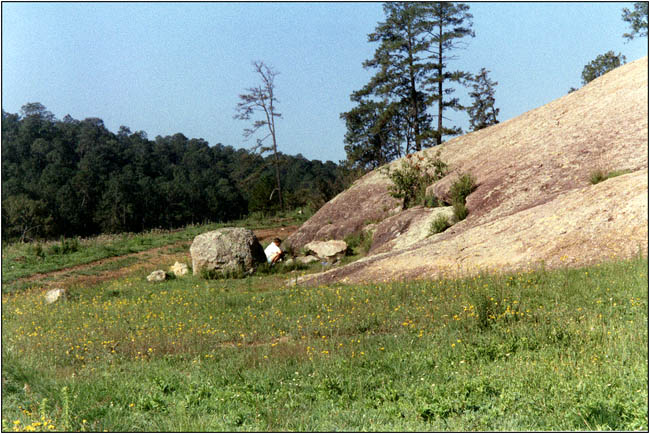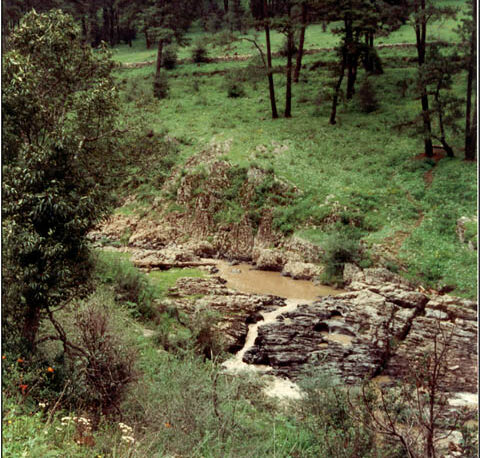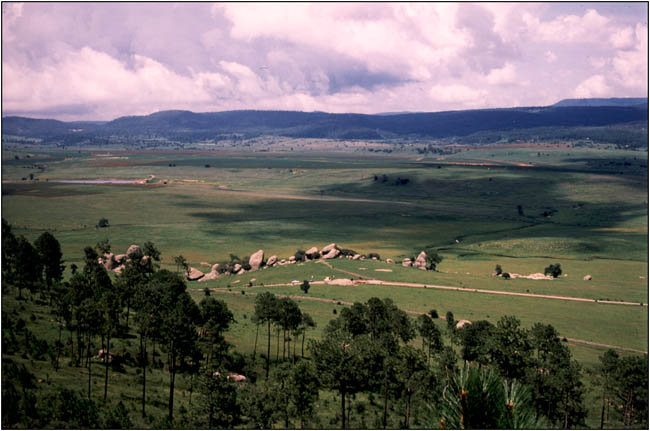Lampropeltis ruthveni (Plateau Mountain Kingsnake)
Rancho San Francisco, near Tapalpa, Jalisco
Rancho San Francisco, located in the northwestern portion of the Transverse Volcanic Belt, is a famous collecting locality for Mexican rattlesnakes. Lampropeltis ruthveni and Crotalus polystictus (Lance-headed Rattlesnake) are or were common here, with the kingsnakes closely associated with rocky terrain. The panoramic view of the area shows the conversion to agriculture of the relatively level terrain, thereby eliminating habitat for these snakes. A comparison of the panoramic view shown here with Fig 21 in Armstrong & Murphy (1979, p. 36), taken approximately 20 yrs later, shows the complete deforestation of the formerly tree-covered hillsides bordering the grassy valley. Other snake species observed here included Crotalus triseriatus armstrongi (Armstrong’s Dusky Rattlesnake), Diadophis punctatus dugesii (Duges’ Ringneck Snake), Pituophis deppei (Mexican Pine Snake), Thamnophis spp. (gartersnakes). It was from this area that kingsnakes were collected during the 1970s. At the time of collection, these snakes were thought to be Jalisco Milksnakes (Lampropeltis triangulum arcifera), and both wild-caught animals and their progeny eventually made their way into a number of zoo and private collections in the U.S. and in Europe. However, we now know that these high-elevation kingsnakes belong to a different species, L. ruthveni, whose range largely coincides with the northern segments of Mexico’s Tranverse Volcanic Belt. Elevations are 7100–8400 ft/2163–2559 m. All photos courtesy of Blake Thomason. (August 1998).



